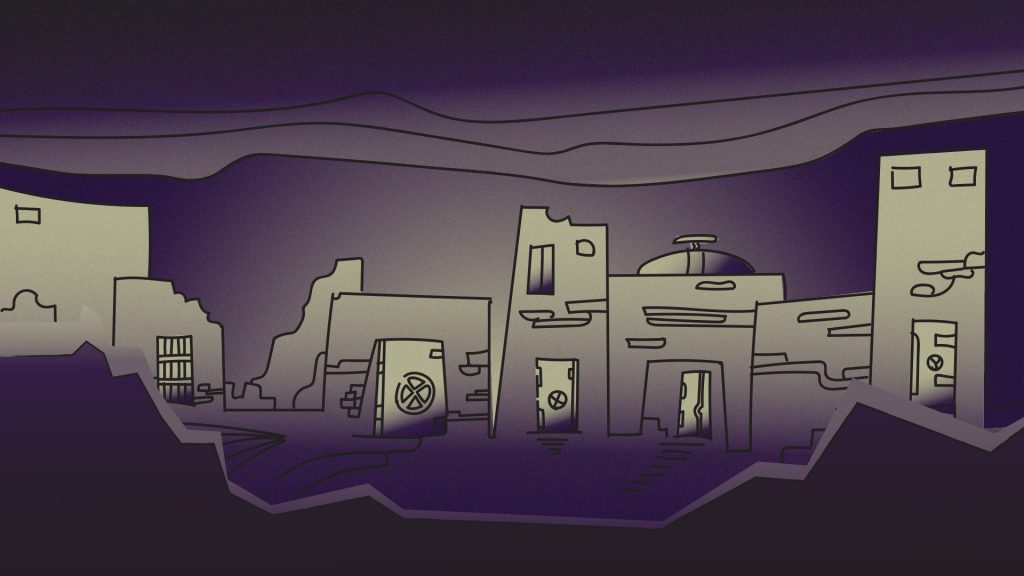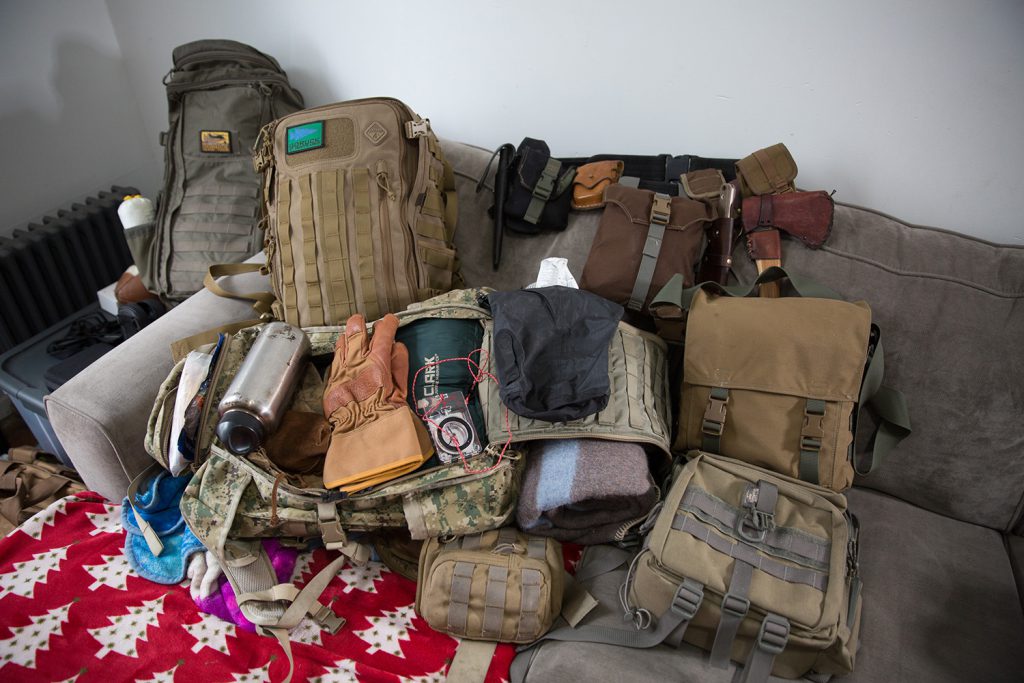The End of the World as We Know It

Listen to the companion episode of SAPIENS: A Podcast for Everything Human!
Back in 2008, Chad Huddleston was driving home from work when he saw a strange, military-style vehicle with a logo on its side. He looked it up and encountered a world of preppers.
The truck was owned by a group called the Zombie Squad, which was started in June of 2003 by a group of six American Red Cross volunteers trying to appeal to a younger demographic, Huddleston discovered. Today there are Zombie Squad chapters all over the country. They consult on Hollywood movies. And they run an online forum at zombiehunters.org to answer questions about everything from self-sufficient living to firearms.
Zombie Squads make up a small portion of the overarching prepper movement—people devoted to learning how to survive any disaster, from a house fire to a zombie attack. The movement, says Huddleston, an anthropologist at Saint Louis University and Southern Illinois University, Edwardsville, has grown “a ton” in recent years. “Because one, people are afraid of things in the world,” he explains. “And two, I think many people have had experiences with different kinds of small-scale or even large-scale disasters, be it Hurricane Katrina or Superstorm Sandy, and they see that there is some practical value in knowing a little bit or having a little bit”—such as knowing how to do first aid or having enough food on hand.
That’s a sentiment that has likely been shared by people throughout the ages—including people facing disasters thousands of years ago. Anthropologists like Huddleston, alongside archaeologists investigating the distant past, are trying to piece together what it means to prepare for disaster—and when, why, and how that preparation pays off.
At first, Huddleston knew very little about prepping, other than what he had seen on the National Geographic channel TV show Doomsday Preppers. “That was everyone’s introduction to prepping, these kind of extremist people living in bunkers in the middle of nowhere with thousands of dollars of gear, waiting for the nuclear apocalypse to come,” says Huddleston. After learning a little more—and realizing that no other anthropologists were investigating this world—he decided to dive in.
Most preppers, Huddleston found, are male, white, and between the ages of 25 and 45. The reason for the racial divide might be self-reinforcing, he notes. “If you see a bunch of white guys in tactical clothing jump out of an armored van, a young black man or woman is not going to be like, ‘Hey, that looks cool. I want to go over there.’ They’re going to run the other way,” he says.
Yet the preppers he worked with are in many ways not what most stereotypes suggest, Huddleston adds. They are generally well-educated and fully employed: “Lots of tech, computer programmers, web developers, that kind of thing,” he says. Most of them care a great deal about giving back to the world. They host information sessions on how to deal with radiation poisoning, for example, or teach people how to make “bug-out bags” (backpacks that contain emergency items for 3–5 days) in case of evacuation. Even though many of them are personally motivated by ideology, they are careful about staying out of political debates, explains Huddleston.
Such groups aim to survive and thrive in any kind of disaster—from a local flood or drought to climate change. Huddleston found their advice so sensible that he joined them.
Disasters have, of course, put pressure on communities for a long time—including in the region now known as Mesa Verde, an area in southwestern Colorado renowned for its astonishing cliff dwellings. An estimated 25,000 to 30,000 people lived at Mesa Verde between 1225 and 1260, and then the population declined rapidly. For a long time, archaeologists had no idea what had become of them. But Pueblo tribes—in what is now New Mexico and Arizona—had, for generations, told stories about an exodus from Mesa Verde, and they claimed the previous inhabitants as their ancestors.
In 2001, Tim Kohler, a professor of archaeology and evolutionary anthropology at Washington State University, set out with a group of specialists to create the Village Ecodynamics Project to figure out the relationship between Ancestral Puebloans and their environment. Did catastrophic drought lead to migrations out of this region, as some had speculated?
They looked at data for the local population over various periods of growth and change, and found that the entire central Mesa Verde area was depopulated by the early 1280s, says Kohler. Based on tree-ring data, the team knew that there was a long cold spell in the 1200s. By the time a great drought hit from 1276 to 1289, most people had already left the region.
Whether Ancestral Puebloans had any preppers among them is unknown. But Kohler points out that in one fundamental way their response to disaster echoes our own: “People are really reliant on each other. It’s not just one household, one family against the climate, against the world. It’s communities, societies working together that will make for our persistence or our failure to persist.”
At least modern society has the benefits of adaptable technologies and scientists devoted to thinking about the future, Kohler notes. With them, and some prepping, we may just yet weather future storms.






























